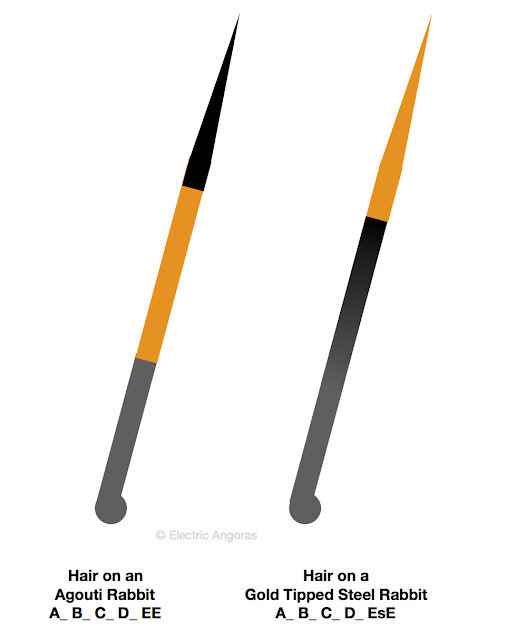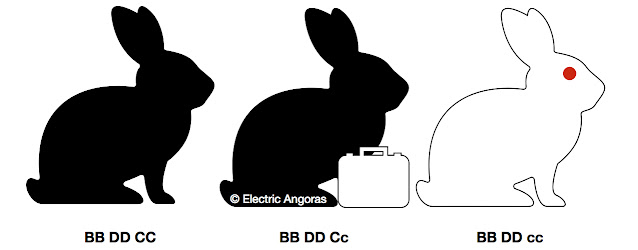The E Locus: Hands Up Baby!

This post is Lesson 6 in our Rabbit Genetics Illustrated series. Extend your hands up into the air like you just don't care! We're almost done. The genes on this Locus affect how far along each hair, pigment will be extended. The E Locus is home to 5 genes. In order of dominance from most to least they are: • Dominant Black noted as Ed • Steel noted as Es • Full Extension noted as E • Japanese noted as ej • Non-Extension noted as e The simplest of them all and one which you are most likely to routinely see is the Full Extension gene. It essentially does nothing to change or influence any of the other colour genes that are already at play. It allows all the other genes to do their thing just as they want to. All of our previous example rabbits have been Full Extension. All of the other genes on the E Locus have some sort of an effect and override what ever it is that the genes on the previous Loci would like to be doing. The Dominant Bla...



